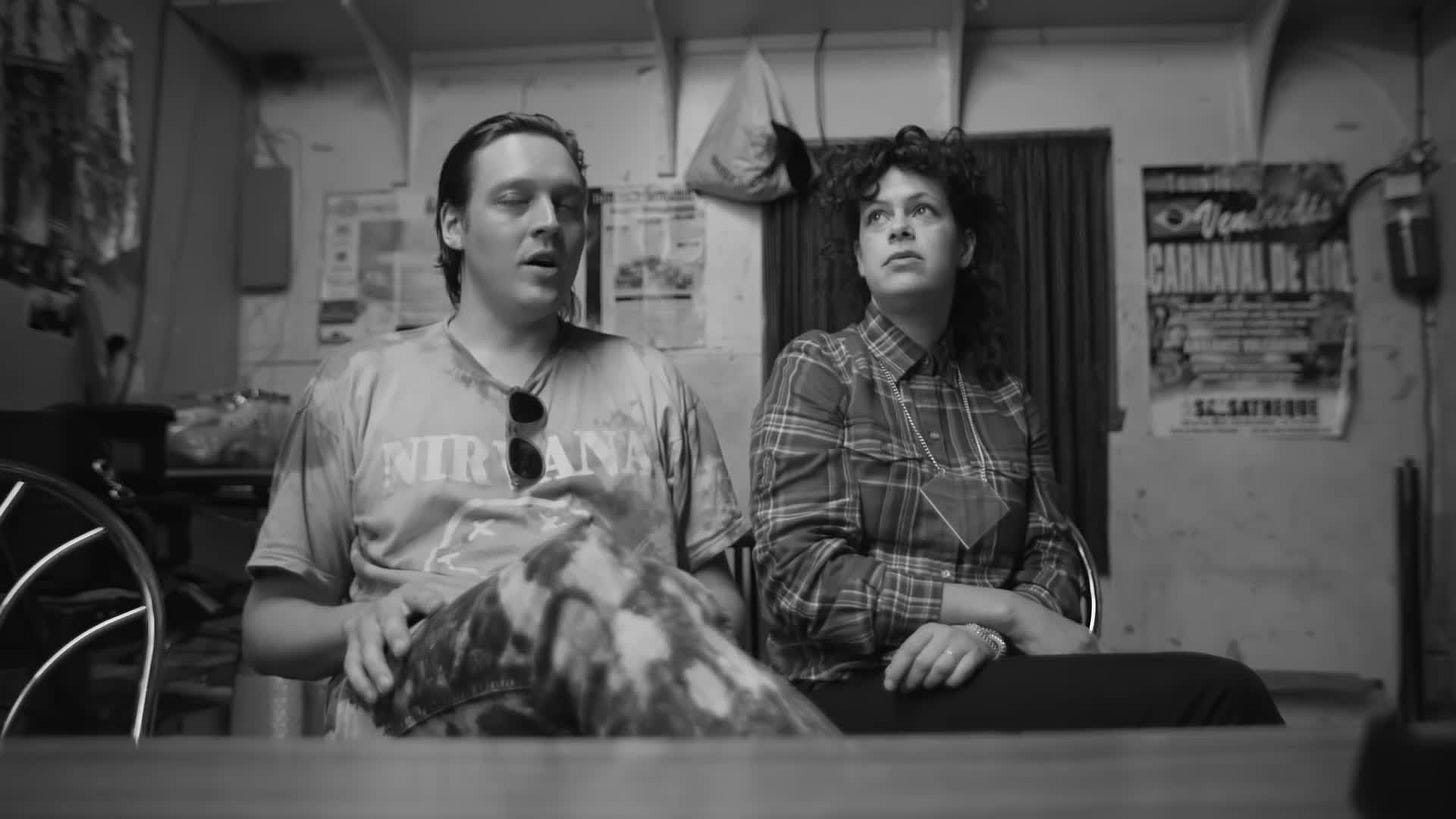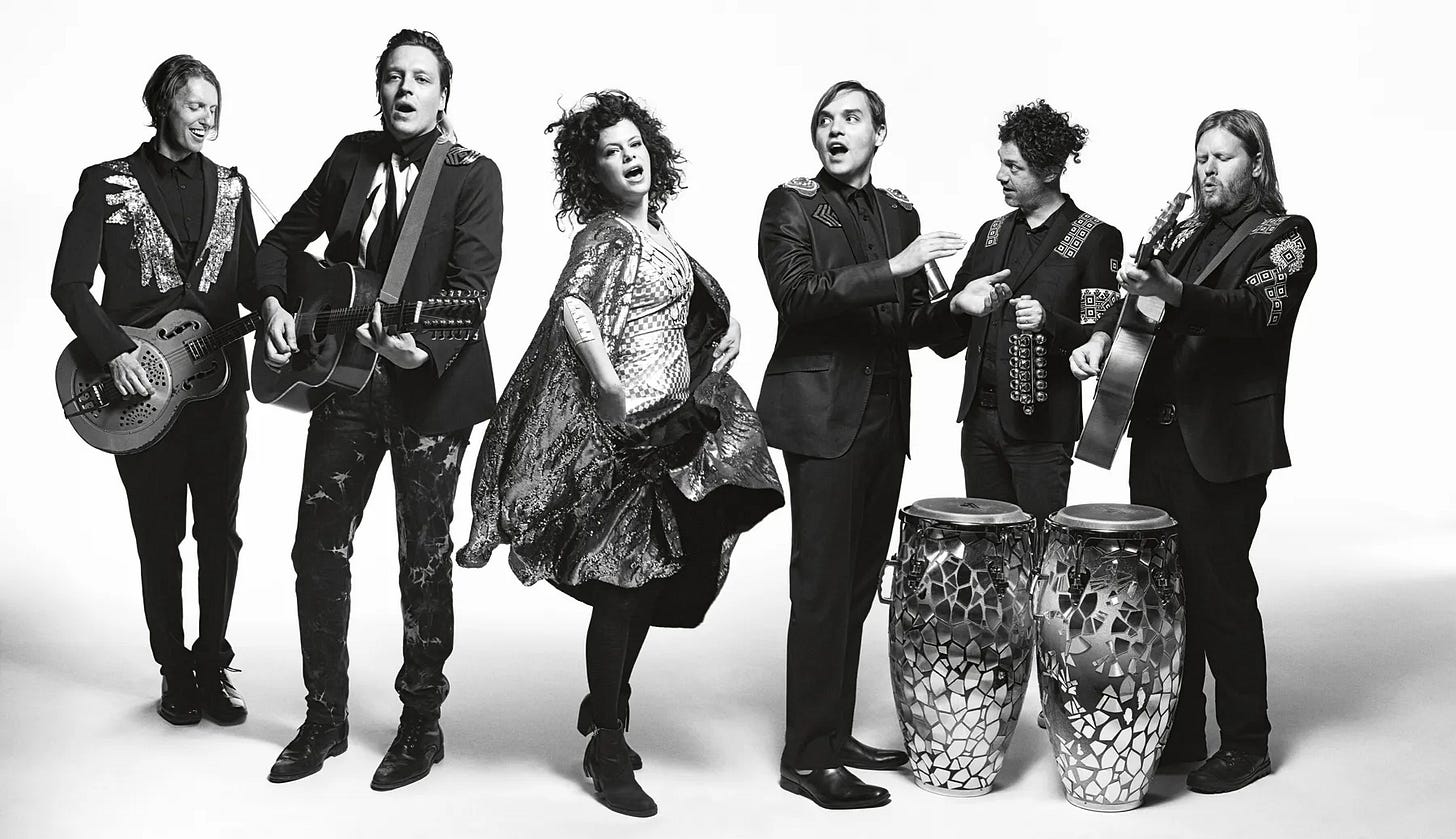How 'Funeral' by Arcade Fire Changed Indie Rock
The early 2000s saw indie rock evolve from a niche genre to a cultural force, and one driving force in the midst of this shift was a Canadian band called Arcade Fire.
Today I’m connecting the dots, from the collective grief of post-9/11 to the even more personal grief of the deaths of close family members to an album that was very nearly put to rest before seeing the light of day.
Our story begins in the depths of a Montreal winter, as death and birth collided. It is here a group of young musicians created an album that would redefine indie rock.
Welcome back to Poetic Wax, vinyl lovers. I'm Andy Fenstermaker, and I love digging into the history of bands, albums, and songs in the record collection I started back in the 1990s. Today we're dropping the needle on a record that emerged from tragedy to become a triumph: Arcade Fire's Funeral.
It’s an album that was born from personal loss, and it was almost scrapped entirely. We'll get to that revelation later, but first, let's set the scene.
It's 2003, and the members of Arcade Fire are grappling with a series of family deaths while simultaneously welcoming new life into their world. In a small apartment in Montreal's Mile End neighborhood, surrounded by thrift store instruments and vintage recording gear, they're about to channel their raw emotions into a debut album that will shake the foundations of indie music.
As I pull this Funeral from its sleeve, feeling the weight of its cultural impact, I'm reminded of why we collect these musical time capsules. Each spin of Funeral is a journey back to a moment when grief and hope collided to create something truly extraordinary.
So settle in, it’s time to explore the beautiful, haunting world of Arcade Fire's Funeral - a record that proves sometimes the most profound art comes from our darkest moments.
The Losses That Inspired Funeral
As the haunting piano of “Neighborhood #1 (Tunnels)” fills the room, let's rewind to the origins of Arcade Fire and the tumultuous period that birthed Funeral.
The band's core formed around the husband-and-wife duo of Win Butler and Régine Chassagne. When they met in 2000, their musical connection immediate and electric. Richard Reed Parry and Win's brother William soon joined, creating the nucleus of what would become Arcade Fire.
But as the band was coming together, tragedy was weaving its way through their lives. In the span of three years leading up to and during the recording of Funeral, the band members lost numerous family members. Win and Will's grandfather, Alvino Rey, a jazz musician who deeply influenced them, passed away. Régine, who had already lost her mother as a child, suffered the death of her grandmother.
Richard Parry lost his aunt, and former member Dane Mills mourned his mother. It was a period of profound loss that cast a long shadow over the band. The album's title, Funeral, was a direct response to this series of tragedies.
Yet, in the midst of this grief, there was also new life. As the band grappled with loss, they also celebrated marriages and the birth of a child. This juxtaposition of death and life, endings and beginnings, permeates every moment on this record.
The songs on Funeral weren't just written; they were excavated from the depths of the band's collective emotional experience. “Wake Up,” with its anthemic call to action, was born from Win Butler's feelings of lost innocence. “Neighborhood #1 (Tunnels)” imagines a world where young lovers dig tunnels to each other's houses to escape the adult world.
“Haiti,” co-written by Régine, touches on her family's history and the political turmoil of her parents' homeland. Each song on the album is a tapestry of personal history, collective grief, and defiant hope.
The band recorded much of the album in a makeshift studio in Maine, owned by Win and Will's parents. This isolated setting allowed them to fully immerse themselves in the creative process, turning their pain into art.
As we listen to the swelling orchestration of “Crown of Love,” it's hard to believe that this lush, intricate music was created by a group of young, grieving artists in small apartments and rural homes. But perhaps it was precisely this rawness, this proximity to profound emotions, that gave 'Funeral' its undeniable power.
Why Arcade Fire Almost Put Funeral to Rest
Before we dig into the story behind Arcade Fire almost scrapping Funeral altogether, I want to take a moment to say that like your favorite albums, creating content is far from easy. A lot goes into it, sometimes for years, before any recognition takes place. So please like, subscribe, rate, review, comment, and share this video and episode with a fellow music lover. I’d appreciate the support.
Episodes of Poetic Wax drop on YouTube every Sunday, on podcast platforms Monday, and on my Substack on Tuesday.
Now, let's address the bombshell I teased earlier: Funeral almost never saw the light of day. As the band was deep into recording, a crisis of confidence nearly derailed the entire project.
Picture this: It's 2003, and Arcade Fire is working tirelessly on their debut album. But doubt begins to creep in. Win Butler, in particular, starts to question everything. The pressure of creating something meaningful in the wake of so much personal loss becomes overwhelming. There's a moment – a pivotal, heart-stopping moment – where Butler seriously considers scrapping the entire album.
Why? Because he felt it wasn't good enough.
The weight of their collective grief, combined with the ambition to create something truly extraordinary, almost crushed the project. Butler later recalled thinking, This isn't the album. We can do better.
It was a knife's edge decision. Had Butler's doubts won out, we might never have heard “Rebellion (Lies)” or “In the Backseat.” Thankfully, the band persevered, encouraged by early positive reactions from friends and family.
With renewed determination, Arcade Fire entered Hotel2Tango Studio in Montreal to finish what they'd started. This former church turned recording studio became the crucible where 'Funeral' would be forged into its final form.
The recording process was as unconventional as the band itself. They used the church's natural reverb to create the album's distinctive sound. Vintage gear and unusual instruments were employed to craft the rich, layered soundscapes we hear on tracks throughout the album.
The band members switched instruments frequently, contributing to the album's eclectic sound. Régine might be on drums for one track, accordion the next, and vocals after that. This musical chair approach added depth and variety to the recordings.
Producer Howard Bilerman, who also played drums on the album, helped capture the raw energy of the band's live performances. He understood that the power of Arcade Fire lay not just in the songs themselves, but in the passionate, almost feverish way they were performed.
Listen to the crescendo of “Neighborhood #3 (Power Out)” and you can almost feel the electricity in that converted church studio. Each cymbal crash, each strum of the guitar, each impassioned vocal carries the weight of the band's journey – from tragedy to near-failure to the cusp of indie rock history.
The Legacy of Arcade Fire’s Funeral
As the final notes of “In the Backseat” fade out, let's reflect on the monumental impact Funeral had on the music world.
Upon its release in September 2004, Funeral didn't just arrive – it exploded onto the scene. Critics were unanimous in their praise, with many hailing it as an instant classic. Pitchfork awarded it a near-perfect 9.7 out of 10, eventually crowning it the second best album of the 2000s. Rolling Stone placed it at number 500 on its 2020 list of the 500 Greatest Albums of All Time.
But Funeral wasn't just a critical darling – it resonated deeply with listeners. The album's themes of loss, love, and resilience struck a chord with a generation grappling with post-9/11 anxiety and the search for authentic expression in an increasingly digital world.
Commercially, Funeral was a slow-burning success. It didn't top charts immediately but gained momentum through word-of-mouth and live performances. The album has since been certified platinum in the UK, Canada, and gold in the US.
Funeral didn't just launch Arcade Fire's career – it helped redefine indie rock. The album's ambitious arrangements, emotional intensity, and seamless blend of rock, folk, and art-pop influences paved the way for a new wave of indie bands unafraid to think big.
Songs like “Wake Up” have transcended the album, becoming cultural touchstones used in films, TV shows, and even sporting events. The track's uplifting chorus has rallied crowds at concerts and protests alike.
Perhaps most importantly, Funeral proved that deeply personal, creatively ambitious music could find a wide audience. It showed that an independent band could achieve massive success without compromising their artistic vision.
As I pull this record off my turntable, feeling the weight of its legacy, I'm reminded of why we collect records. Each spin of Funeral is not just a listen – it's a connection to a moment when a group of grief-stricken young musicians poured their hearts into their art and changed the course of music history.
That grief is relatable, and the anthems tucked onto this record show that we can overcome grief and see the light even in the darkest of times.
Arcade Fire would go on to release more critically acclaimed albums, headline major festivals, and win numerous awards, including the Album of the Year Grammy for The Suburbs. But Funeral remains their raw, beating heart – a testament to the power of turning pain into beauty.
So next time you're flipping through the 'A' section of a record store, grab a copy of Funeral if you don’t already have it. It's not just an album – it's a cultural artifact, a time capsule of emotion, and a reminder that sometimes, the most profound art comes from our darkest moments.
Revisiting Indie Rock in the Early-Mid 2000s
The early 2000s, marked a significant turning point for indie music, with several bands breaking through to mainstream success while maintaining their artistic integrity. This period saw indie rock evolve from a niche genre to a cultural force, influencing fashion, film soundtracks, and even mainstream pop music.
Arcade Fire's "Funeral" wasn't the only landmark album of this era, more was it the only album birthed from tragedy and hard times.
Modest Mouse, a band that had been building a cult following since the mid-90s, released Good News for People Who Love Bad News in 2004. The album's lead single, "Float On," became an unlikely hit and anthem of perseverance. Its optimistic message, contrasting with the band's typically darker tone, resonated widely in a post-9/11 world, propelling Modest Mouse to commercial success without compromising their indie credibility.
Meanwhile, Blonde Redhead was going through a transformative period of their own. In 2002, lead singer Kazu Makino suffered a serious horse-riding accident that nearly ended her music career. This traumatic event profoundly influenced their 2004 album Misery Is a Butterfly, resulting in a more introspective and atmospheric sound as they leaned more into shoegaze and dream pop influences.
These stories of perseverance and artistic evolution, mirror Arcade Fire's journey and exemplify the spirit of indie music during this pivotal time. I’ve covered both of those records here on Poetic Wax, and you definitely want to dig into those stories next.









